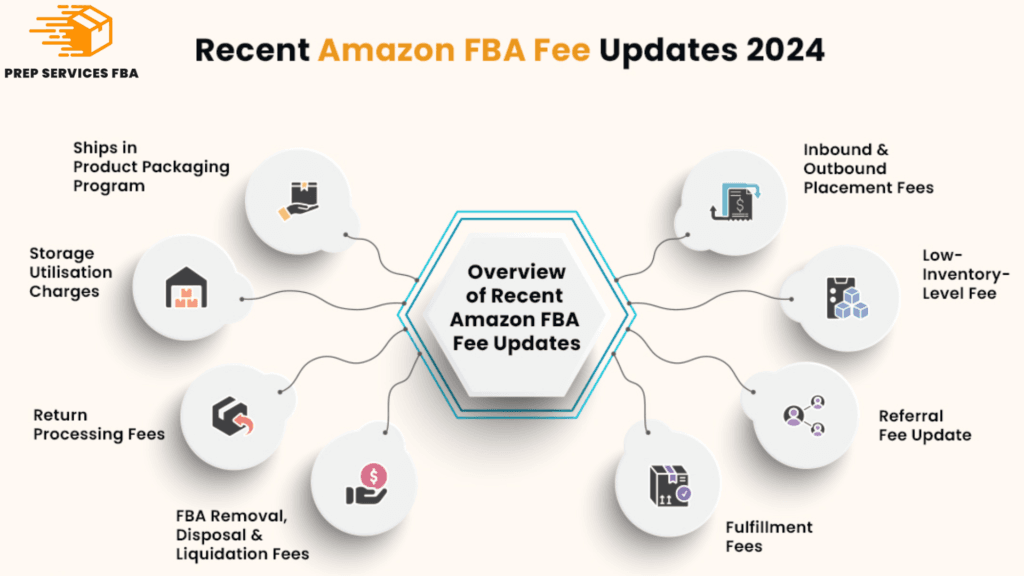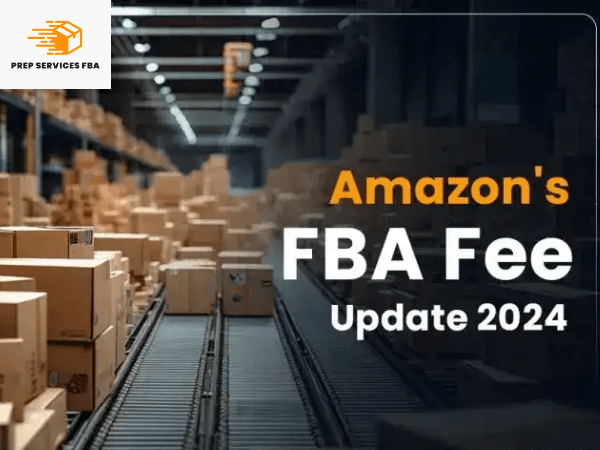Amazon FBA fees are costs that sellers incur when using Fulfilment by Amazon services to fulfill products for sale. Key fees include referral fees, typically a percentage of product selling price and fulfillment fees that cover storage, packaging and shipping as well as long-term storage and returns charges. Understanding these fees allows sellers to accurately calculate profitability and set effective pricing strategies within Amazon’s highly competitive marketplace environment.
How much does Amazon FBA cost?
Amazon FBA costs are highly variable, dependent on seasonality, item type and size as well as other factors. Here is an example of current Amazon FBA fees as of 9/9/24. We will explain each one below.
| Fee type | Price |
| Low-Price FBA fulfillment fees (per unit) — Items priced under $10.00 *Cost depends on shipping weight, season, product type, and packaging material. Listed pricing excludes apparel, dangerous goods, and Ships in Product Packaging (SIPP) | Small Standard: $2.29 – $3.10 Large Standard: $2.91 – $6.69 + $0.08 per 4 oz interval above first 3 lb Large Bulky: $8.84 – $9.88, + $0.38/lb interval above first lb Extra-large: From $25.56 + $0.38/lb-interval above first lb to $202.69 + $0.19/lb interval above 151 lb |
| FBA fulfillment fees (per unit)* — Items priced $10.00+ *Cost depends on shipping weight, season, product type, and packaging material. Listed pricing excludes apparel, dangerous goods, and Ships in Product Packaging (SIPP) | Small Standard: $3.06 – $3.87 Large Standard: $3.68 – $7.46 + $0.08 per 4 oz interval above first 3 lb Large Bulky: $9.61 – $10.65, + $0.38/lb interval above first lb Extra-large: From $26.33 + $0.38/lb interval above first lb to $203.46 + $0.19/lb interval above 151 lb |
| Monthly inventory storage | $0.56 – $4.28 per cubic foot, depending on season, size, and type of item, and if you are subject to the storage utilization surcharge |
| Aged inventory surcharge | $0.50 – $6.90+ per cubic foot, depending on the days stored |
| Inventory storage overage fee | $10 per cubic foot monthly |
| Product return fees* *Listed pricing excluded apparel and shoes | $1.78 – $157.35+ per unit returned above product category threshold |
| Inventory removal and disposal fees | $1.04-$14.32+ per unit depending on the shipment’s weight |
| Unplanned services fees | $0.20 – $2.00 per unit depending on the problem group |
| Manual processing fees | $0.15 – $0.30 per unit |
| Package prep fees | $0.70 – $2.55 per unit depending on product category, size tier, and selected service(s) |
| Inbound placement service fee | $0.21 – $6.00 per unit depending on item sizing tier, item weight, number of fulfillment centers, and inbound location |
| Low-level inventory fee | $0.89 – $1.11 per unit depending on the item’s sizing tier, shipping weight, and historical days of supply |
| Inbound defect fee | $0.04 – $0.07 per unit depending on item sizing tier, shipping weight, and defect type. |
(Source: Amazon Seller Central)

How To Calculate Amazon FBA Seller Fees
As mentioned above, all Amazon sellers must pay to sell on the marketplace. Amazon takes a cut of every purchase in the form of a referral fee. Referral fees vary by product category, ranging between 5% and 45%.
But as you now know, there’s more to Amazon FBA than selling fees. If you don’t stay on top of how much you’re paying Amazon, you may find that your profits are lower than expected, or even that you’re barely breaking even. That’s why it’s important to calculate your total FBA costs, so that you know exactly how much you’re spending on Amazon FBA – and whether it’s worth it.
Below are a few tips for calculating your Amazon FBA costs.
1. Consider your product and order details
To calculate your Amazon FBA costs, you’ll first need to gather the following data points for your business:
- Number of orders per month
- Average number of items per order
- Average sale price per item
- Average production cost per item
- Average weight and dimensions per item
The weight and dimensions information will help you compute your fulfillment and storage fees, while information on your orders, pricing and production cost will help you calculate margins, profitability, and seller fees.
2. Include the cost of your seller plan
Don’t forget to factor all costs into your Amazon FBA total – including the cost of simply selling on Amazon.
There are two plans for Amazon sellers to choose from based on monthly order volume: the Individual plan and the Professional plan.
The Individual plan is for merchants selling fewer than 40 items per month, and involves:
- No monthly seller fee
- $0.99 fee for each item sold
- Variable post-sale fees depending on category
The Professional plan is for merchants selling over 40 items per month, and includes:
- Monthly subscription fee of $39.99
- Variable post-sales fees depending on category
3. Review your monthly cost and profit breakdowns
If you already use Amazon FBA, make sure to review your monthly bills. Small fees can add up quickly, and often without a merchant realizing it – so try to parse every cost, charge, and fee as individual line items, rather than grouping costs together. That way, you can identify your biggest spending areas, and determine whether Amazon FBA is the most profitable and cost-effective fulfillment option for your brand.
[Read more: Order Fulfillment Costs and 3PL Pricing Models: Everything You Need to Know]
4. Request pricing from an FBA alternative
If your FBA fees are looking expensive, you might want to shop around and find better alternatives to FBA. For example, Prep Services FBA offers DTC and B2B fulfillment solutions that can increase sales on your ecommerce website and help you achieve affordable 2-day shipping.
Prep Services FBA offers Fulfillment by Merchant (FBM) and if you utilize Amazon fulfillment today, we highly recommend diversifying your fulfillment options (e.g., use both FBA and FBM) to maximize sales.










